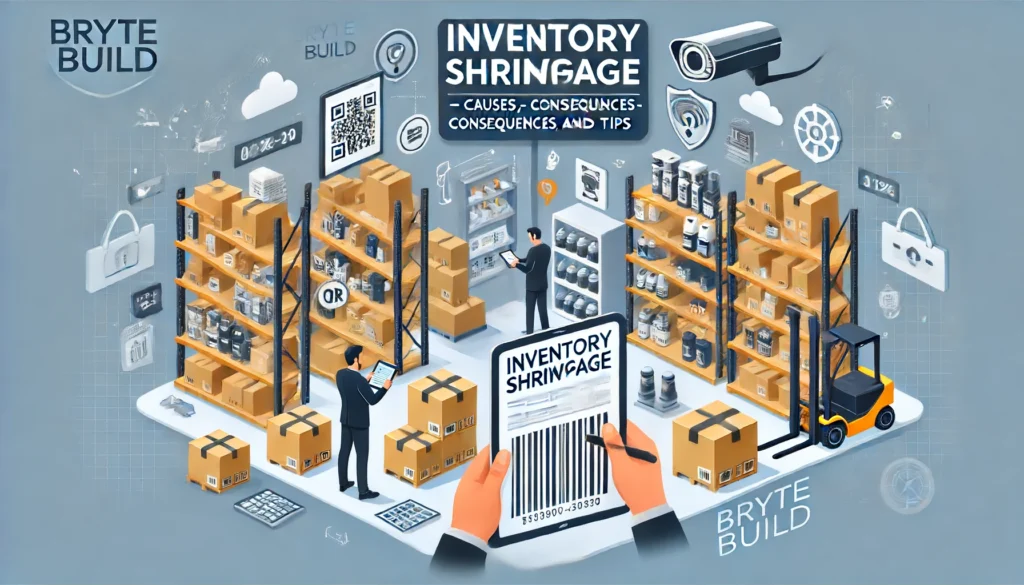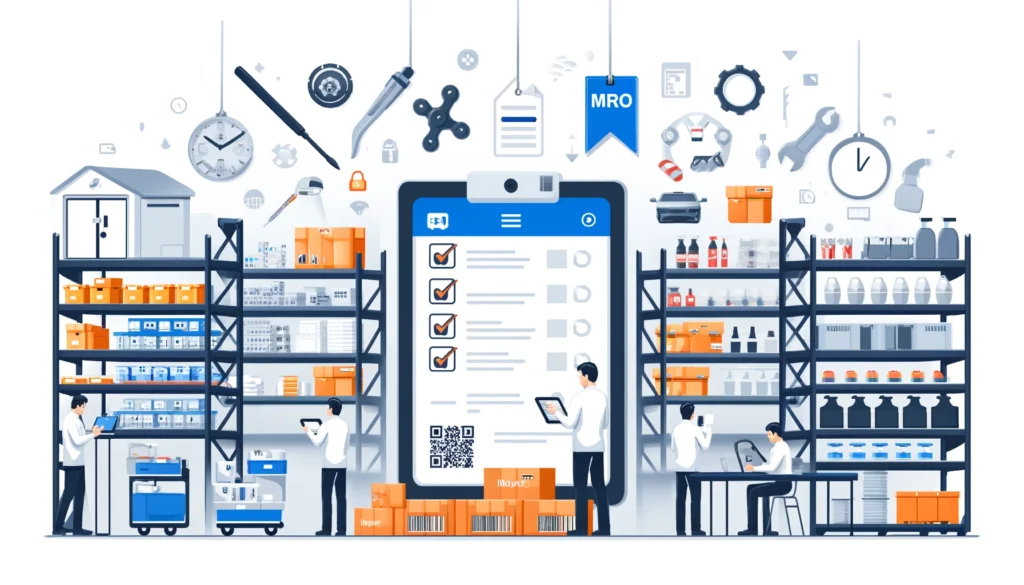Manufacturing Supply Chain Management – Best Practices for SMEs
Supply chain management (SCM) encompasses everything from negotiating vendor contracts for raw materials to handling product returns. While it is central for any company producing or selling physical goods or services, this post focuses on the importance and best practices of SCM from the perspective of small and medium manufacturers.
Table of Contents
- What is Manufacturing Supply Chain Management?
- The 5 Main Components of Manufacturing Supply Chain Management
- Are Supply Chain Disruptions the New Normal?
- The Importance of SCM for Manufacturers
- Manufacturing Supply Chain Management Best Practices for SMEs
- Enhancing Business Operations with Brytebuild
- Key Takeaways
- FAQs
What is Manufacturing Supply Chain Management?
Supply chain management (SCM) is a central concept in commerce that refers to the management of everything related to the flow of goods of a company. It encompasses every process that plays a part in raw materials being transformed into finished products and also involves aspects of after-sale activities like handling warranty claims and returns.
Manufacturing supply chain management includes all aspects of business that deal with physical goods and their logistics: inventory optimisation, vendor management, logistical processes like shipping, distribution, and delivery, as well as manufacturing processes such as WIP (work in process) inventory management, production scheduling, capacity planning, and demand forecasting.
The role of SCM is to ensure that the supply of goods is as streamlined as possible – that raw materials make it to the warehouse or production facility at just the right time and in the right quantity; that production capacities match demand as closely as possible; and that lead times and product costs stay minimal. As such, SCM can be seen as part of the larger inventory management process.
What are Supply Chains?
A supply chain is the entire journey a product takes from the beginning of its manufacturing effort to finished sales. Far more than just logistics management, it comprises the sum of processes, people, businesses, activities, information, and resources needed to get a product or service from scratch to consumers.
Therefore, a supply chain includes not just raw materials but also the procurement management of the materials. On the other end of the pipeline, it includes not just finished goods, but also their distribution network, logistics partners, and returns.
All the organisations that constitute a supply chain are joined together through physical and information flows. Physical flows are the transformation, movement, and storage of goods and materials. Information flows, on the other hand, allow the various players in a respective supply chain to coordinate plans and control the day-to-day flow of goods throughout the supply chain.
The 5 Main Components of Manufacturing Supply Chain Management
There is no single correct way to manage a supply chain because there are countless different ways of doing business. Still, supply chain management systems usually consist of five essential phases: strategy, sourcing, manufacturing, delivery, and returns. Let’s go over these in a bit more detail.
Planning and Strategy
Every organisation must plan and manage all the resources needed to meet customer demand for their product or service. The supply plan should factor in everything from material availability and production capacity to labour and equipment requirements, logistical constraints, and budgets. The more supply-related aspects of production are considered in the supply plan, the fewer surprises one can expect down the line.
A strategic approach to planning considers both short-term and long-term goals, aligning supply chain activities with the company’s overall objectives. According to the Chartered Institute of Procurement & Supply (CIPS), effective planning can reduce costs by up to 30%.
Sourcing
Ensuring high-quality raw materials from reputable vendors is an essential aspect of any production effort. The process does not end once the suppliers are under contract. Instead, the supply chain manager is tasked with continuous vendor management. Sourcing also involves continuous procurement planning and purchase order management (ordering, delivery, authorising payments, etc.) throughout the manufacturing process.
Building strong relationships with suppliers and having alternative sources can mitigate risks. A report by the UK government suggests that having a diversified supplier base can reduce the impact of supply chain disruptions by 50%.
Manufacturing
This central phase in supply chain management details all processes related to in-house production, i.e., the transformation of raw materials (and services) into finished goods. Things to take into account in the SCM system include production efficiency, planning and scheduling, inventory optimisation, quality assurance, and packaging.
Efficient manufacturing processes are crucial for maintaining product quality and meeting delivery deadlines. The Manufacturing Institute reports that improving manufacturing efficiency can lead to a 20% increase in production output.
Delivery and Logistics
This phase entails the logistics of the whole production operation. Coordinating customer orders, scheduling deliveries, dispatching loads, creating and sending invoices, receiving payments, etc., all fall into the delivery phase. Resilience is crucial here; having an extra distribution partner or delivery method can be invaluable during disruptions.
Implementing technology like GPS tracking and route optimisation can enhance delivery efficiency. According to Transport for London, optimising delivery routes can reduce transport costs by up to 15%.
Returns and After-Sales
For most commercial products, an SCM effort needs to have policies for customer returns and warranty care. Developing a functional and cost-effective system for after-sales equals more customer satisfaction in the long run.
Managing returns efficiently can improve customer loyalty. A study by the University of Warwick found that a well-managed returns process can increase repeat business by 25%.
Are Supply Chain Disruptions the New Normal?
In recent years, an increasingly globalised marketplace and near-constant supply chain disruptions have become the new normal across the entire manufacturing industry. According to a 2022 study by Deloitte, the era of simple supply chains is essentially gone for good.
Shipping delays, raw material shortages, rising shipping prices, and the resulting production planning and inventory management issues have become mainstays in manufacturing. Increasing control over one’s supply chain by implementing effective SCM practices is therefore increasingly important for companies of any size. This is especially crucial for smaller players that need to juggle tight profit margins and have fewer resources for backups.
A report by the UK Department for Business, Energy & Industrial Strategy highlights that 73% of SMEs faced significant supply chain disruptions in the past year. This underscores the need for robust SCM practices.
The Importance of SCM for Manufacturers
Supply chain management is a natural part of any company purveying physical goods, be it distributors, retailers, or manufacturers. Still, SCM includes some distinct considerations for the latter.
Manufacturing has Innate Complexities
Manufacturing supply chains are generally more complicated than distribution. Materials and components need to converge with labour and processing in a timely, planned-out manner, often in many consecutive steps. This implies precise forecasting and capacity planning to adequately schedule production.
According to the UK Manufacturing Review, effective SCM can reduce production downtime by up to 40%, highlighting the importance of well-coordinated supply chain activities.
Outsourcing Affects Global Supply Chains
In the modern manufacturing landscape, one brand often has several companies contributing to its products. Many manufacturers, especially in the SME space, rely on partial or total sub-assembly production for their revenue. Conversely, others depend on sub-contractors to produce some or all of their components, assembling the final products in-house.
The Institute of Supply Chain Management (IoSCM) indicates that outsourcing parts of the supply chain can lead to cost savings of up to 25%, but it also requires meticulous management to avoid delays and quality issues.
Manufacturing is Experiencing a Digital Transformation
With the onset of Industry 4.0, modern manufacturing is becoming increasingly reliant on digital technologies and solutions. Manufacturers are adopting Internet of Things (IoT) devices, implementing robotics, and utilising machine learning. This ushers in more control over processes through real-time analytics and data-based decision-making.
A survey by PwC found that 72% of manufacturers plan to increase their digital investment over the next five years, aiming to enhance supply chain visibility and efficiency.
Manufacturing Supply Chain Management Best Practices for SMEs
To end this article, here are five manufacturing supply chain management best practices that any small or medium manufacturer should focus on.
Facilitate Collaboration with Key Nodes in the Supply Chain
More collaboration with key supply chain partners means faster response times in case of sudden disturbances. Implement supplier relationship management practices to strengthen partnerships. Consider vendors as partners rather than service providers, simplify and facilitate back-and-forth information sharing, and check in with them frequently.
Keep Up to Date with Shifts in Regional Supply
Today’s logistics networks are dynamic and fast-changing. While it certainly makes sense to strengthen existing relationships, it’s also a good idea to keep a close eye on any news and events that can introduce opportunities or alternative sources. A continuous effort to improve the efficiency of the supply chain is among the basic tenets of effective supply chain management.
The Confederation of British Industry (CBI) suggests that staying informed about regional supply trends can reduce lead times by up to 20%.
Measure Supply Chain Performance Regularly
The only reliable way to ensure an efficient supply chain is by measuring its efficiency. This is where supply chain-centric key performance indicators (KPIs) come into play. Examples of useful metrics include On-Time and In-Full Delivery, Customer Order Cycle Time, Fill Rate, and Inventory Days of Supply.
A study by the Chartered Institute of Logistics and Transport (CILT) shows that businesses that regularly measure supply chain performance can improve their operational efficiency by 30%.
Increase Supply Chain Resilience
Utilising production strategies like Just-in-Time (JIT) or adopting pull-type workflows is perhaps the best way to minimise waste and increase manufacturing efficiency. However, these types of optimisations are also more susceptible to disruptions. With global supply chains in turmoil, many manufacturing sectors are seeing a resurgence of Just-in-Case (JIC) manufacturing practices. Always keep a few extra vendors on the quick dial.
Implement Manufacturing Software
Lastly, implementing manufacturing software can make a decisive difference in your SCM efforts. Good MRP systems and manufacturing ERPs include built-in procurement tools as well as vendor and order management modules, integrated with the whole manufacturing operation. This provides you with real-time info on all inventory movements and introduces added visibility and traceability over the whole supply chain. The best providers also include Quality Assurance (QA), Customer Relationship Management (CRM), and Return Merchandise Authorisation (RMA) modules.
A report by Deloitte indicates that businesses using integrated manufacturing software can reduce their inventory carrying costs by up to 25%.
Enhancing Business Operations with Brytebuild
Brytebuild offers a comprehensive suite of supply chain management tools designed to help businesses of all sizes optimise their operations. Here’s how Brytebuild can support your SCM efforts:
- Real-Time Inventory Tracking: Brytebuild provides real-time updates on inventory levels, movements, and costs, ensuring that you always have an accurate view of your stock.
- Procurement and Vendor Management: Streamline procurement processes and manage vendor relationships effectively.
- Detailed Reporting and Analytics: Access detailed reports and analytics to identify trends, track supply chain performance, and uncover potential issues before they escalate.
- Integrated Supply Chain Modules: Brytebuild offers integrated tools for quality assurance, customer relationship management, and return merchandise authorisation.
- User Training and Support: Comprehensive training and support to ensure your team can effectively use the system and maintain supply chain efficiency.
Experience the benefits of Brytebuild’s advanced supply chain management features. Contact us for a demo or sign up for a free trial to see how we can help you optimise your supply chain processes.
Key Takeaways
- Supply Chain Management: Central concept in commerce that refers to the management of everything related to the flow of goods of a company.
- Components: Includes aspects of inventory optimisation, vendor management, logistical processes like shipping, distribution, and delivery, as well as manufacturing aspects like production scheduling, and capacity planning, as well as customer returns and RMAs.
- Five Phases: Planning and strategy, procurement and sourcing, manufacturing, distribution, and returns or after-sale support.
- Complexities for Manufacturers: Manufacturing supply chains are more complex than distribution due to the need for precise forecasting, capacity planning, and the convergence of materials and labour.
- Best Practices: Facilitate collaboration with key suppliers, measure supply chain performance regularly, increase supply chain resilience, and implement manufacturing software for added visibility and control.
FAQs
What is manufacturing supply chain management?
Manufacturing supply chain management is the systematic process of managing all aspects of a manufacturing company’s product in its journey from raw materials to finished goods. It comprises the sum of processes, people, businesses, activities, information, and resources needed to fabricate a product and get it to consumers.
Is manufacturing part of supply chain management?
Manufacturing is necessarily a part of supply chain management because SCM includes all phases and processes in a product’s lifecycle from raw material to after-sale care.
Is manufacturing the same as supply chain management?
Not all supply chains include a manufacturing phase because some supply chains comprise goods or services that lack value-added production steps. However, all manufacturing processes are a part of their respective supply chains because any manufacturing is a step in the product’s overall journey from raw materials to finished goods.
What are the five basic components of supply chain management?
The five basic components of supply chain management include the planning or strategy phase, the sourcing or procurement phase, the manufacturing phase, the delivery or logistics phase, and the returns phase.



